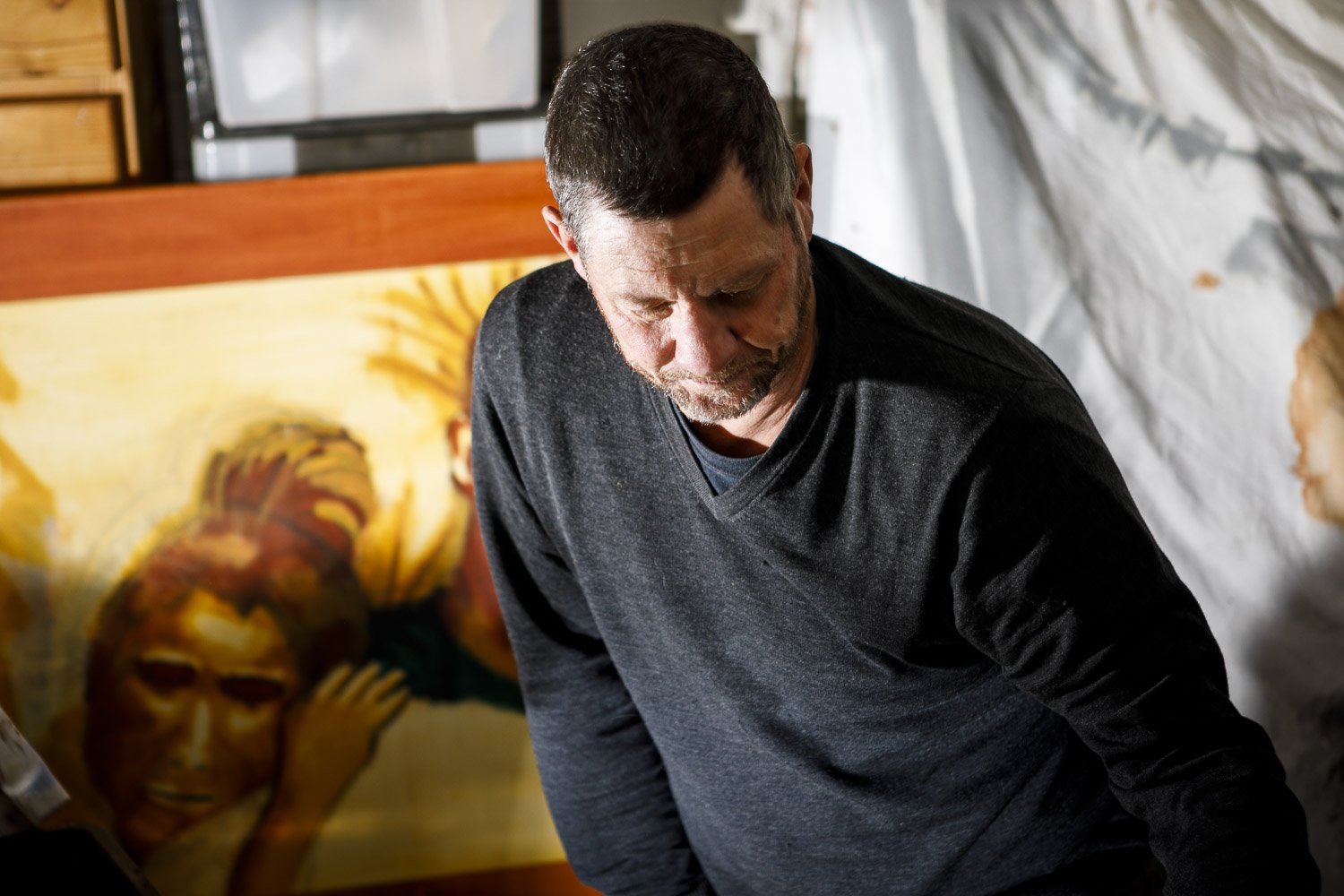James Farquharson
Army, Painter
James can’t remember a time when he didn’t want to be a soldier. Growing up in Canberra, he and his brothers would explore the Australian War Memorial on Saturday mornings while their mother shopped. He learned a lot about Australian military history through the art and relics on display there, as well as through his father, who was a journalist and an oral historian.
In 1991, at University in Melbourne studying to be a teacher of History and Politics, James joined the University Reserve Support Company. Choosing to then enlist full-time into the Infantry, he went to Duntroon. However, upon developing Chronic Fatigue Syndrome and Glandular Fever, he was medically discharged. Returning to Melbourne, he joined the 5th/6th Battalion, Royal Victoria Regiment (RVR) and, later, the Bendigo Regional 8th/7th Battalion, RVR, as a reservist, where he served for seven years.
It was during this time that General Sir Peter Cosgrove integrated some reserve units into regular battalions to go to East Timor with the United Nations mission to support that country’s move to self-government. James' Bendigo unit was part of this integration. The result was A Company in the 5th/7th Battalion of the Royal Australian Regiment. James was sent to Darwin to train for five months and, from here, he flew to East Timor.
It was only when he returned to Australia that James realised how affected he had been by the deployment.
“I knew fairly soon after I got home that I wasn’t doing brilliantly. That was one of the reasons I did a visual arts course with the Victorian College of the Arts (VCA). It gave me something to focus on.
“My artwork, Eyes of the Damned, was a self-portrait and an attempt to visualise my fifteen-year struggle with Post-traumatic stress disorder (PTSD) and depression after operations in East Timor. It attempts to externalise the thoughts and feelings in the dark places of the ‘Black Dog’. It shows the eyes of the damned; damned by the conditions of PTSD and depression, by the ability to take another person’s life and how none of these things fits into civilised places. It is a life understood only by those I served with.”
His battle with depression continued. James and his wife, Myfanwy (Miffy) and their daughters, Molly and Jessie, moved back to the Mornington Peninsula from Bendigo.
“It was hard for me. I had built a safety net in Bendigo. That move was probably as difficult as coming back from East Timor. At that point, art was one of the few emotional releases I had. I’m not particularly articulate about my emotions and that was how I managed.”
James graduated as a teacher of History, Politics and Humanities and worked as a teacher and librarian in various schools for seven years. During this time, he escorted a school tour of the World War 1 battlefields in France. Here, he collected shrapnel wherever he found it. These relics united his childhood memories, his military and teaching careers and his art. James used them as stimulus material for his university art project on ‘found objects’. After photographing each item, he drew a corresponding image and then had the images morph into a final drawing, most poignantly, of a skull.
While James’ pieces are very personal, they’ve reached a much wider audience. His works were selected to be part of a travelling art exhibition for the Shrine of Remembrance and he was placed in the top ten of the Napier Waller Art Prize in 2019. James was also included in the Australian National Veterans Art Museum’s (ANVAM) International Veterans’ Art Exhibition during the Invictus Games. He has been a strong, and constant, supporter of ANVAM and of the work they do for the veteran community.
James’ art is changing, just as he is. He’s exploring sculpture and printmaking.
“I want to get outside more, to paint. I’m also interested in life drawing.
“There’s a therapeutic side to making a lino cut; a repeated action that is also true of applying paint or pastel or pencil. It certainly gives me a kind of peace. It’s become a way of expressing things that I have no other way of expressing.”
In art, James has found both peace and success.
@Farquo67






